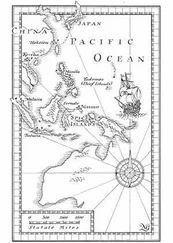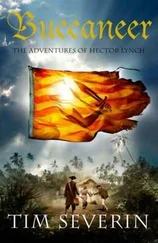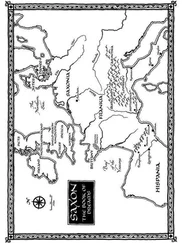'Perhaps you could tell me exactly what is involved so I could explain it to your escort when they arrive.'
'I don't want to bore you with the details, and I can hear by your accent that you are a northerner - don't be offended, I'm Armenian by origin — so you may not even be a Christian. But the spot where the Christ died and was buried is one of the truly sacred places of our faith. A magnificent basilica was erected there not long after the blessed Augusta Helena discovered the True Cross and her people identified the cave where the Christ's body was interred. For centuries the sanctity of the sepulchre was respected, even when it fell into the hands of the Muslims. Unfortunately times have changed. In my father's day a Caliph, who justly earned the title of Murad the Mad, gave orders for both the basilica and the sepulchre to be destroyed. He told the local governor that no stone was to be left upon another. The governor was also ordered to close all the other Christian churches in the province and turn away Christian visitors. Since then we have had no reliable information as to how bad was the destruction of the sepulchre — the Anastasis or Resurrection, as it is known — nor what the ruins look like today. Murad the Mad went to meet his maker sixteen years ago. He was assassinated by a religious zealot - rather appropriate, don't you think? - and our Basileus is currently negotiating with his successors for permission to rebuild the basilica and repair the sanctuary. That's where I come in. I have been commissioned to assess the present condition of the buildings and make on-the-spot repairs. Those civil servants may be venal idlers, but they are good at keeping archives, and I've managed to locate the plans of the original basilica. But if the shrine is so badly wrecked that it cannot be restored, then I am to design an entirely new building worthy of the site.'
'That's quite a responsibility,' I observed.
'Yes, the emperor sets great store by the scheme. He believes it will show the depth and extent of his devotion, and he hopes he will be rewarded with an improvement in his health. I presume you are familiar with the problems he has been having in that regard. That's also why he placed the imperial dromon at my disposal. It shows his level of concern.'
To my surprise Trdat had not bothered to lower his voice when he spoke of the state of Michael's health.
He breezed on. 'Perhaps you could pass word to your military friends that we will be ready to sail as soon as I've loaded the last of the paints and tesserae — those are the little cubes we use for making mosaics. It should be no later than the day after tomorrow. My own staff - the mosaicists, plasterworkers, painters and the rest — are already on standby. Though whether they will actually have any work to do when we get to the Holy Land remains to be seen.'
When I relayed all this information to Harald, he seemed pleased. I supposed he thought that the personal vessel of the Basileus was exactly the sort of transport that he merited. Certainly when Harald and his men, including Halldor, whom I was glad to see, arrived at the Bucephalon, the Norwegian prince walked up the gangplank as though he was the owner of the vessel, not just the escort commander for an architect.
'Tell your Varangians that we'll be making just one stop en route,' Trdat said to me. "We need to put in to the island of Prokonnesos to pick up some marble in case we can patch up the place of resurrection.'
Already the dromon was moving out to sea under oars, every stroke closely supervised by the protokarabos, the officer responsible for the rowing. He was very conscious that people were watching from the windows of the Great Palace, and he wanted as smart a departure as possible.
It occurred to me that the protomaistor might well know something about the derelict statues in the Basilike, and I asked him if he had ever visited the place.
'Of course,' he answered. 'My father and grandfather, while he was alive, put me through all the hoops. They made me study everything an architect needs to know and more - geometry, arithmetic, astronomy, physics, building construction, hydraulics, carpentry, metalwork, painting. There seemed no end to it. Luckily I enjoyed the work, particularly drawing. I still get satisfaction from preparing diagrams and elevations. They positively encouraged me to visit the old temple sites, took me round the Basilike, and never lost the chance to point out the remnants of the old statuary on display in Constantinople. It's still there if you know what you are looking at. That tall bronze statue of a woman in the Forum of Constantine, for example. Everyone thinks it's a former empress or perhaps a saint. In fact, it's an early Greek goddess. And have you ever noticed the figure on top of the Anemodoulion?'
'The monument near the Forum Tauri, the pyramid with a bronze figure of a woman at the top, which turns and points with the slightest breath of wind? We have similar wind vanes on our ships and houses in the north lands, but they are much smaller and simpler in design.'
'Yes, that's right,' said Trdat, 'But how many people know that when they look up at the Anemodoulion to check the wind direction, they are actually consulting a bygone pagan goddess? But we'll talk more about this during the voyage. I expect it will take us at least three weeks to reach the Holy Land, even aboard the fastest dromon in the fleet.'
Trdat's company turned our trip into one of the most informative sea journeys I have ever undertaken. The Armenian loved to talk and he was free with his knowledge. He pointed out details about coastlines, described his upbringing in a family of famous architects, and introduced me to some of the techniques of his profession. He took me down into the hold to open up sacks of tesserae and showed me the little cubes of marble, terracotta, different-coloured glass and mother-of-pearl. He demonstrated how they would be stuck into a bed of soft mortar to make portraits or patterns on a wall or on the floor, and told me that a skilled mosaicist, working flat out, could complete in one day an area as wide as a man could spread his arms in each direction.
'Imagine how long it took to decorate the inside of the apse in the church of the Holy Wisdom. Grandfather Trdat calculated that it required two and a half million tesserae.'
When we reached the marble island of Prokonnesos halfway across the Propontis Sea, he also invited me to go ashore with him as he visited the quarries where miners were cracking open the rock and splitting away sheets of marble ready to be sawn and carved to shape.
'Prokonnesos marble is so widely used that I find it rather boring,' he confessed. 'You see it everywhere - the same white stone with blue-grey veining. But it's readily available, and the supply seems inexhaustible.'
'I thought that most of the new marblework was made from salvage.'
'True. Yet many of those salvaged pieces came from Prokonnesos in the first place, and the quarry owners have been shrewd enough to pander to the builders' laziness. They prepare the marble pieces here on the island, carving out the shapes and patterns, and have them ready and waiting on the quay. You simply pick up ready-made segments for columns, and capitals and pediments in stock designs, but it restricts an architect's creative skill if he has to work with such stuff just because his client wants to save money. I know of at least nineteen different varieties of marble, yet if you were to walk around Constantinople you would think there was only one — Prokonessos. I love it when I have the chance to work with dark red porphyry from Egypt, serpentine from Sparta, green from Thessaly, or rose red from Syria. There's even a black and white marble that can be brought from the far end of the Great Sea.'
In the end my new-found friend selected only a few plain slabs of the Prokonnesos marble which, as he put it, 'were good enough to put down as paving around Christ's tomb if the flooring has been ripped up at Mad Murad's command'.
Читать дальше







